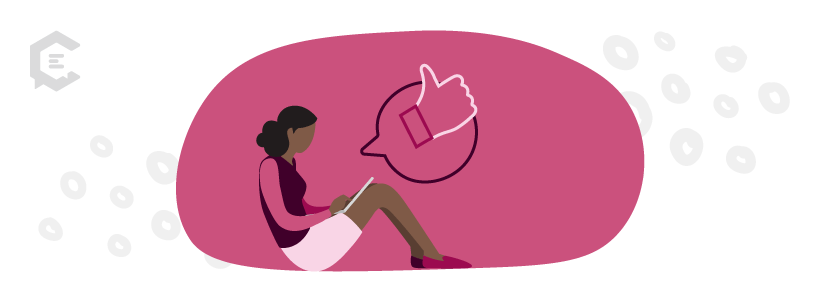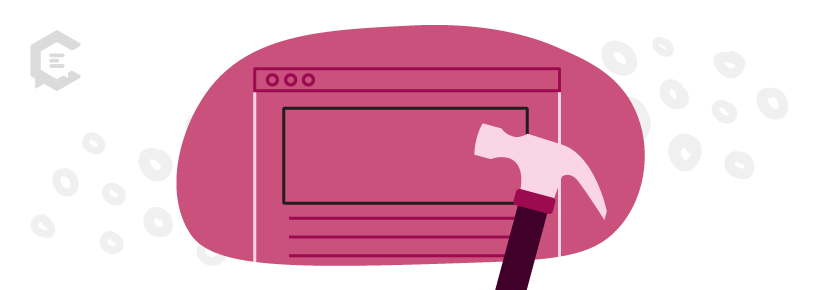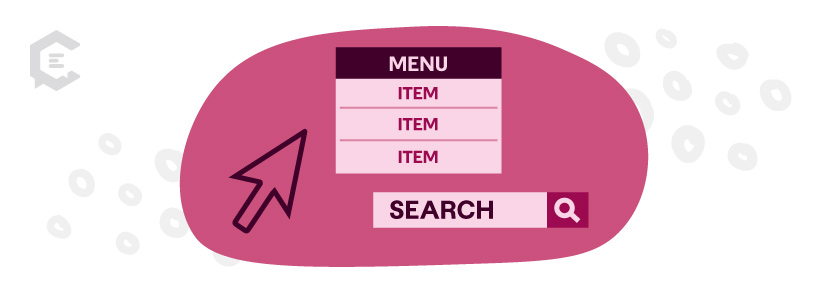In some ways, your website is a lot like a car: Just because it works doesn’t mean it’s fun to drive.
If you’ve ever suffered the bumps and bruises that come with a vehicle with poor suspension or struggled to figure out how to use the radio while zipping along the highway, you know how it feels to have a car work — but not necessarily work for you.
Similarly, a website that delivers a poor user experience (UX) can be all work and no fun for your target audience. But that’s where user experience content comes in.
User experience content maximizes your visitors’ attention spans and gets you higher conversion rates. This article will dive into understanding user experience and exploring best practices.

User Experience Defined
The term user experience refers to how users see, work with, and feel about a product, service, or website.
Returning to the car example, an enjoyable trip from point A to point B may have less to do with whether you reach your destination and far more to do with how quickly you got there, how the drive felt, and the cool little creature comforts that made it feel good.
It’s the same with a website. Even if each page has all the necessary information users need to learn about or purchase your product, if it’s hard to navigate, slow, inaccessible, or rough on the eyes, users may default to a competitor’s site the next time they get online.
Here are some basic attributes that contribute to enhancing the user experience of a website:
- How quickly it loads
- Whether or not it’s visually appealing
- How accessible its content is
- Whether the information on it is credible
- How easy it is to navigate
With a little audience research and some thoughtful design, you can deliver on each of these factors, creating a fluid intersection of good content and a compelling user experience.
How User Experience Content and Web Design Intersect
The process of optimizing the user experience on your website involves not only meeting users where they’re at but also moving them through the marketing funnel toward a sale.
In some cases, you may be equally invested in maintaining existing customers. Fortunately, many of the benchmarks are the same, regardless of whether you’re courting new customers or trying to keep your old standbys happy.
Here are some high-level goals you’ll want to use as you create a user experience content wireframe around which to build a powerful UX:
- Increase the number of referrals you get from existing customers
- Boost organic traffic coming to your site
- Engage your target market by providing the kind of content they need
- Build your credibility in your market sector
- Retain more customers or keep existing partners satisfied
To meet these objectives, you need to leverage not just an efficient site structure but also effective content using UX content.
UX Content Defined
User experience content involves text, graphics, videos, and blog UX best practices that give users what they want while maximizing ease of use. UX content is very different from UX web design in that UX web design also focuses on how your pages connect to each other.
For example, when building an e-commerce site, some web architects choose to put a shopping cart on every page, as well as buy links next to each item.
While the design of these buttons may involve UX content principles, the decision to put them on the page is more an element of the basic design of the site.
On the other hand, all of the following contribute to effective UX content:
- The images you choose for each item
- Each item’s description
- How you format descriptions, including the order in which you present info, how it’s spaced, and even bolding, headings, and punctuation
- The color, shape, and placement of each button
- Decisions regarding which related items to include at the bottom of the page or elsewhere
These elements combined produce a more user-friendly, sales-friendly experience.
User-friendly content vs. sales-friendly content
While it’s tempting to assume that user-friendly content is, by default, sales-friendly, that’s not always the case. Here’s a brief breakdown of what these concepts mean and how they’re different:
User-friendly content
User experience content involves text, images, and site workflows that are comfortable to navigate. This kind of content is frequently:
- Easy to read, with appropriate headings, spacing, paragraph lengths, and use of bullet points
- Logically arranged. For example, images align with paragraphs or headings addressing what’s in each visual, and stories and explanations flow in a coherent, intuitive fashion
- Buttons, videos, and other clickable media are easy to access
These features make a site fun and comfortable.
Sales-friendly content
Sales-friendly content should also be fun and comfortable, but you structure it around writing for customer intent or what’s most likely to encourage customers to make a purchase. This could be either on your site or after connecting with a representative.
Here’s a simple example:
Suppose you work for a civil engineering firm, and you’re trying to increase conversions, particularly with government and municipal clients.
Here’s what you know about your target market:
- They already know what they need
- They’re probably considering three or four other options
- Most of them are located within 50 miles of the firm’s physical location
- They need to present viable, affordable options to decision-makers
Your content needs to be more than easy to read and understand. You also need to engineer it to guide your target market across the commitment gap.
Here are some elements you could include to craft the kind of content that boosts sales:
- Thought-leadership white papers. You can outline how innovative civil engineering can solve novel or particularly problematic challenges that others struggle to address.
- Locally focused content. This shows that you’re not only familiar with the local area but also personally committed to engineering solutions that create a safe enjoyable environment for your friends, family, and community. This is also why user experience content is important for local SEO: Searchers will likely include the city or town name when looking for a solution.
- Content that emphasizes unique elements of your engineering solution or customer service. This is tricky because everyone is going to say, “We meet the needs of customers.” To differentiate yourself, you want to thoroughly research precisely how your competition does this and what you do that’s different—then talk about it.
- Include terms related to pricing in your calls to action (CTAs). While it may be strategically and logistically unviable to put up a price list, you have to honor the desire of clients to know how much your services are going to cost them. So you can let them know that they’re only one interaction away from actionable numbers with CTAs like, “Call now for pricing info,” or “Get a quote within 24 hours or less.”
While this example is specifically for a civil engineering firm, the principles apply to virtually any industry. You should create content specifically aimed at getting people to commit to your product or service.
Best practices for creating UX content
The following user experience content best practices create a better experience for your visitors by tweaking either your site’s information or logistical flow.
Make your content easy to read
Scannable user experience content is faster to read and provides answers quicker. It’s best to presume that your target audience is only going to check out your page for a few seconds before deciding whether or not it provides the info they need.
To make content scannable, you should:
- Use plenty of headings
- Incorporate bullet points
- Make sure each heading answers a question a visitor has
- Keep paragraphs under 100 words
- Use lists, when appropriate
- Frontload your pages by putting the most important information at the top
Make sure your site loads quickly
A site that loads quickly encourages both sales and a comfortable UX. By striking a balance between high-definition, high-quality user experience content and features that aren’t too data-heavy, you can make it easier to use your site.
For example, when it comes to images, it’s often best for your photos to be JPEGs, and if images only have a few colors, rendering them as PNGs.
You can also reduce the number of link redirects. This is when someone tries to load one page but they then get redirected to another one. This takes extra time and may make your page feel clunky to users.
Another factor that contributes to making pages load faster is the size of the files they contain. You can ease the burden on your visitors’ computers and networks by enabling file compression, which makes files smaller without compromising their quality.
Make it easy to navigate your site
Your content needs to support the navigability of your site, particularly when it comes to the kinds of content you include on each page. A site that’s easy to navigate typically has:
- A logo users can click to return to your homepage. This should be large and stay in place as users scroll down.
- A menu that gives users full access to all of your pages
- A search bar
- A subscription button
- Your contact information
- A list of the products or services you offer
By including this kind of content, you’re honoring your visitor’s desire to know about you, and your products easily move from one page to another, and interact with your organization.
Enhance your site’s visual appeal
A good-looking site is a lot like an attractive car: You can’t wait to get in and take it for a spin. Also, a consistent, predictable, visual aesthetic can strengthen your brand identity and eliminate distractions that could impact the sales process.
Here are some tips for creating visually appealing web content:
- Keep it simple, silly. When appropriate, you should use snackable content, meaning visitors get just enough to nibble on without having to sit down for a long meal.
- Include images and videos that both complement and break up your pages’ content.
- Use color schemes that complement your branding
Focus on high-quality content
By investing in premium content, you can get the best of both worlds: content that not only engages readers but also encourages them to become paying, repeat customers. To ensure you have top-of-the-line content, you can:
- Populate your pages with well-written, professional, thoughtfully-composed user experience content
- Provide authoritative, accurate, well-researched content. This can position you as a trustworthy source of knowledge and a leader in your industry.
- Proofread your copy or hire an expert to proofread it for you. Grammatical errors are like scratches in an otherwise beautiful paint job: They detract from your message.
By making your UX content easy to read, ensuring it loads quickly and is simple to navigate, and by boosting its visual appeal, and maintaining consistent, professional quality, you can enhance the user experience of your visitors.
By providing a carefully planned and optimized user experience, you can draw more visitors and convert them into paying clients.
Give Your Audience the Ultimate User Experience
User experience can make or break your conversation metrics. It’s also a highly specialized skill. If you’re looking to create a smooth and streamlined experience for your audience, it might be time to outsource.
At ClearVoice, our experts can ensure your site is optimized to drive engagement and growth. Talk to a content specialist today to learn how.






